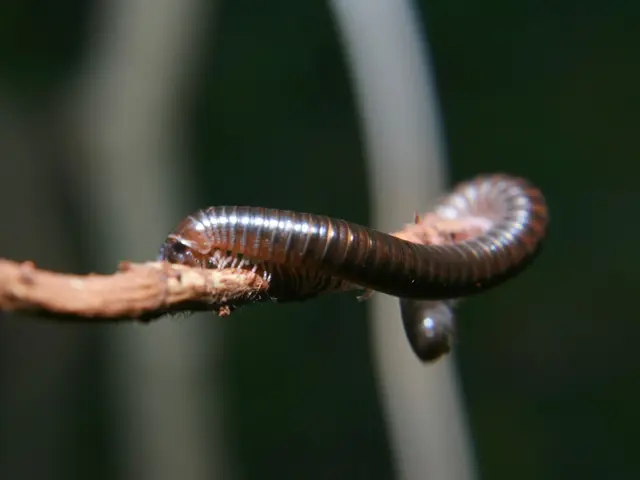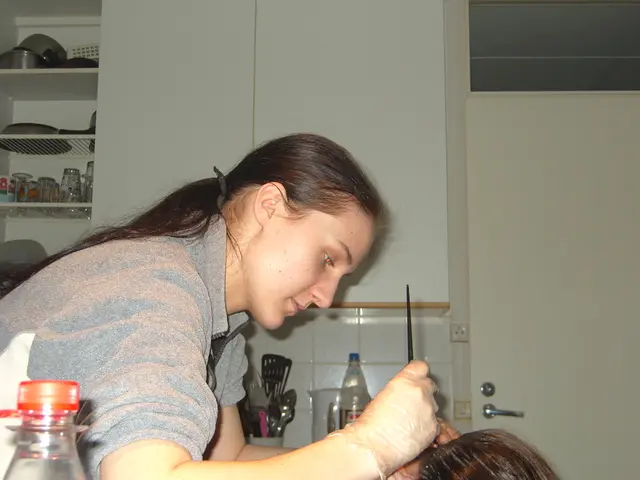Severe rosacea outbreak: Understanding causes, symptoms, and available remedies
Revamped Guide on Rosacea Fulminans
Hey there! Rosacea fulminans, a rare and intense skin inflammation, is a beast I bet you didn't see coming. It surfaces suddenly, targeting the central part of the face - the chin, cheeks, and nose. Call it pyoderma faciale if you're feeling fancy.
This variant of rosacea is different from the usual, showing up as painful, swollen nodules and pimples that seem to merge, rather than the common acne you're used to. But don't worry, most folks who are affected are women of childbearing age. However, we're still in the dark about the exact cause of this condition.
Treating this condition can involve some hefty arsenal – corticosteroids and isotretinoin aka Accutane. Some might even find relief with stress management and tweaking their diet. But remember, a healthy dose of patience is key as results may take a while to show up.
Navigating the mystery of rosacea fulminans' origins can be tricky. But in the labyrinth of research, one 2020 study hints that rosacea fulminans might have connections to conditions like inflammatory bowel disease and even pregnancy.
The same study suggests that previous encounters with rosacea could increase the likelihood of developing rosacea fulminans.
So, what could trigger this nastiness? Well, stress, hormonal fluctuations, and certain medications are on the radar. A 2021 literature review also touches on dietary factors that might send rosacea symptoms into overdrive. Although it's important to note that these findings don't specifically apply to rosacea fulminans.
Potential dietary triggers that could worsen rosacea symptoms are:
- Spicy foods
- Alcohol
- Foods containing cinnamaldehyde, like chocolate, tomatoes, and citrus fruits
- Histamine-rich foods, like wine, aged cheese, and processed meats
- Hot drinks
But all these potential dietary triggers can be different for each person, so it's up to healthcare professionals to tailor advice to your unique situation.
Rosacea fulminans symptoms often focus on the forehead, nose, cheeks, and chin. Expect sudden redness, painful pustules, swelling, inflammation, flushing, and stinging or burning sensations. Some folks might even see eye irritation and light sensitivity. But don't fret, systemic symptoms like fever and fatigue are quite rare.
Medical treatments for rosacea fulminans can include oral isotretinoin (a potent acne treatment) and corticosteroids, which can come in both oral and topical forms. Other approaches might involve antibiotics in combination with corticosteroids and lifestyle changes.
Since various factors could potentially trigger or worsen rosacea, healthcare professionals might suggest identifying and dodging those triggers. That could mean reducing stress with meditation, deep breathing exercises, regular exercise, and journaling. Making specific dietary adjustments, like cutting back on alcohol, could help too. And pick up some gentle face care products to slather on your mug.
Combining these strategies with medical treatments can help individuals affected by this condition better manage symptoms and boost their quality of life.
If you're experiencing symptoms that go beyond typical rosacea or acne, like large, tender nodules, abscesses, or significant facial discomfort, it's a good idea to reach out to a dermatologist or healthcare professional. Or if your symptoms come on suddenly, persist, or worsen despite efforts, it's crucial to seek medical attention.
If you notice eye irritation or inflammation, experience systemic symptoms such as fever, or spot other concerning developments, reach out to a healthcare professional pronto. Because the sooner you act, the better your chances are of resolving symptoms faster, preventing complications, and minimizing emotional stress.
Wrapping Things Up
Rosacea fulminans is an unusual, severe inflammatory skin condition. Symptoms usually surface suddenly and show up as redness, painful nodules or pimples, swelling, inflammation, and other unwelcome sensations. While the exact cause is unknown, ladies in their childbearing years are the prime audience for this condition.
Dealing with rosacea fulminans can require a mix of corticosteroids, isotretinoin, lifestyle tweaks, and perhaps some stress management and dietary adjustments. Keeping a keen eye on potential triggers and communicating with your healthcare provider are crucial parts of the rosacea fulminans care plan.
- The study from 2020 in the field of dermatology suggested that rosacea fulminans might be linked to inflammatory bowel disease and pregnancy.
- The 2021 literature review indicated that dietary factors such as spicy foods, alcohol, and certain foods containing cinnamaldehyde, like chocolate, tomatoes, and citrus fruits, might exacerbate rosacea symptoms for some people.
- Women in their childbearing age are more likely to develop rosacea fulminans, but the exact cause of this medical condition remains unclear.
- In the management of rosacea fulminans, a combination of medical treatments, including corticosteroids, oral isotretinoin, and lifestyle changes like stress management and dietary adjustments, can help patients better control symptoms and improve their overall health and wellness, particularly in the context of women's health and skin conditions.








